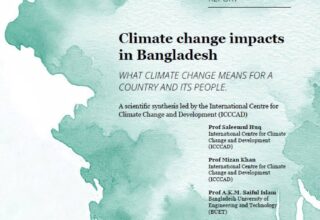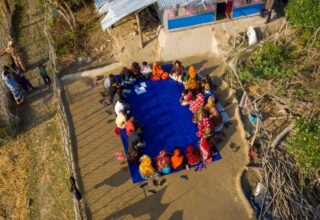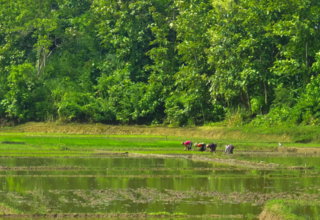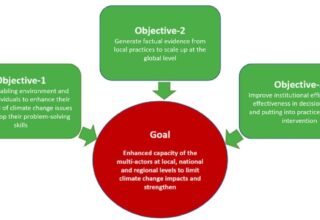(This article originally published here)
Government should install at least 10 high precision automatic tidal gauge stations along the coast
Bangladesh has been experiencing sea-level rise by 6-20mm per year in three different coastal regions, a new study prepared after analysing 30 years’ data on tidal water states.
The study named “Assessment of Sea Level Rise and Vulnerability in the Coastal Zone of Bangladesh through Trend Analysis” found that the tidal water trend in the Ganges floodplain is 7-8 mm/year. On the other hand, the trend is 6-9 mm/year in the Meghna Estuarine floodplain and 11-20 mm/year in the Chittagong coastal plain areas.
The overall trend in the coastal zone shows that the water level trend in the Chittagong coastal plain area is much higher than the Ganges and the Meghna estuaries.
This the first study on sea-level rise conducted by Bangladesh using its own data.
Earlier, the International Panel on Climate Change (IPCC) projected sea-level rise of 300 to 710 mm (30-71cm) by the year 2100 for moderate emission scenarios.
However, for the Bay of Bengal the IPCC predicts the rise to be between 0.2-1m for low to high emission scenarios by the year 2100.
The “Climate Change Cell” of the Department of Environment (DOE) initiated the study under the Bangladesh Climate Change Trust Fund. It was conducted by the Centre for Environmental and Geographical Services (CEGIS).
The government released the study report yesterday during a workshop held at the city’s Cirdap auditorium.
The study focused on the trend analysis of the tidal water level to visualise the historical change of sea-level rise in the coastal areas of Bangladesh.
Based on the hydro-morphological characteristics, the coastal zone has been delineated into three regions: the Ganges Tidal Plain or the Western Coastal Region; the Meghna Deltaic Plain or the Central Coastal Region and the Chittagong Coastal Plain or the Eastern Coastal Region.
The trend derived from the global tide gauge data found that the long-term trend in Global Mean Sea Level Rise (GMSL) is 1.7 (1.5-1.9) mm/year between 1901 and 2010 for a total sea level rise of 0.19 (0.17-0.21)m.
Alternatively, the high-precision satellite altimetry record suggests that between 1993 and 2012, a GMSL rate of 3.2 (2.8 to 3.6)mm/year have been observed.
The sea-level rise trend derived from the tidal gauge data along the coast of the Bay of Bengal is much higher than the GMSL trend derived from long-term global tide gauge data and short term satellite data, said hydrologist Prof Ainun Nishat who reviewed the study.
Bangladesh, located along the Bay of Bengal, is highly vulnerable to climate change where the rise in sea level is one of the important contributing factors.
In the study, short-term trend of tidal water level for a period of 30 years have been analysed to visualise the historical change in sea level rise in the coast of Bangladesh.
The trend analyses were carried out using the water-level data of BIWTA, BWDB and Chittagong Port Authority.
The study team used data from 15 water-level stations of Bangladesh Inland Water Transport Authority (BIWTA) and Bangladesh Water Development Board (BWDB), located in the coastal zones, to asses the sea-level rise.
Malik Fida Abdulla Khan, director of the CEGIS who led the study, said that the government should install at least 10 high precision automatic tidal gauge stations along the coast of Bangladesh to get more specific data on the sea-level rise in future.
The location of these stations should be along the coastal belt near Hiron Point, Sundarbans, Khepupara, Char Changa, Sandwip, Maheshkhali, Noakhali, Chittagong Port, Cox’s Bazar and Teknaf, he added.
Written by: Abu Bakar Siddique, Environment Reporter, Dhaka Tribune









